8 Wonders of Imagination in Architecture
“I am enough of an artist to draw freely upon my imagination. Imagination is more important than knowledge. Knowledge is limited. Imagination encircles the world.”
You might think a quotation like this is from an incredible artist — perhaps Pablo Picasso or J.R.R. Tolkien. But it's credited to Albert Einstein — a surprising and insightful statement from a theoretical physicist. Imagination gives form to knowledge, brings knowledge to life and expands our world — painting it in bright colors and adding flavor to dullness.
We are all born with great imagination, but most tend to lose it sometime before adulthood, much to our detriment. I remember watching my young sons fighting off imaginary bad guys and winning great battles in our backyard, wishing I could see the world that they so clearly saw around them. Now I watch my 7-year-old daughter tiptoeing through our backyard, singing and twirling like Julie Andrews in The Sound of Music, walking in a world only she can see in her mind.
When imagination is added to architecture, an ordinary design idea becomes Beethoven's Ninth Symphony, frozen and habitable. Frankly, most buildings lack this vital ingredient. Our built landscape is grotesquely unimaginative, and we know it, consciously or unconsciously.
These eight architectural projects and one landscape exhibit great imagination in space, structure, materials, function and future-oriented thinking. Too often we think the only way to enclose space (create architecture) is with four walls and a flat ceiling: a box. Through applied imagination, these examples offer other possibilities.
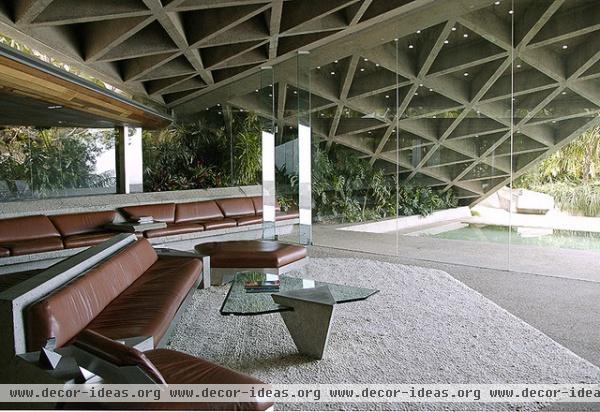
Imagination in Space
The ceiling of the Sheats-Goldstein home by John Lautner is not level, plumb or smooth. In fact, the waffle concrete surface is not only ceiling but also wall. A smooth concrete surface could have sufficed, but the waffle pattern creates rhythm and pattern. Bottles set in the concrete create small skylights that play with the sunlight and cast ever-changing patterns onto the floor. This is a masterpiece of imagination.
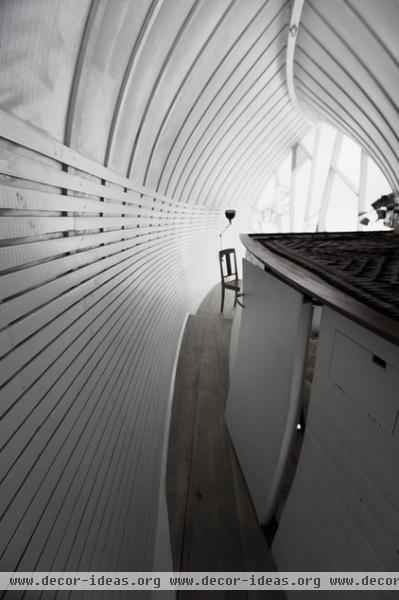
Wall and ceiling combine to form an organically conceived cocoon inside this second space. The rhythm of interior patterns marches you along through the nonlinear space, obliterating architectural stereotypes.
More about this tiny house in Sweden
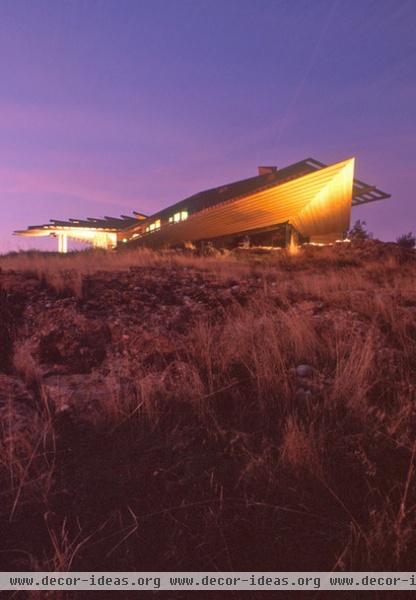
Imagination in Structure
Certainly a box on this hill would have been sufficient to function as a house. But this iconic design offers more. The structure is kinetic, creating a home that is ready to take off and fly at any moment.
The architect conceived a structure more inspiring than plumb walls and level ceilings would allow.
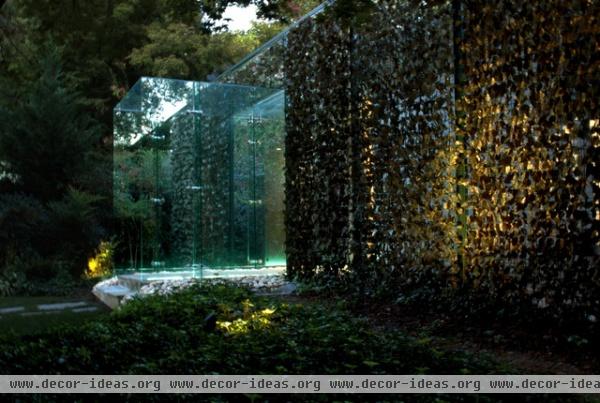
Imagination in Materials
A screen wall and entry become sculpture as landscape and architecture marry.
The landscaped screen wall changes with sun angles and wind direction, casting a play of shadows and light on the ground. A glass box implies entry, lightly defining one's path.
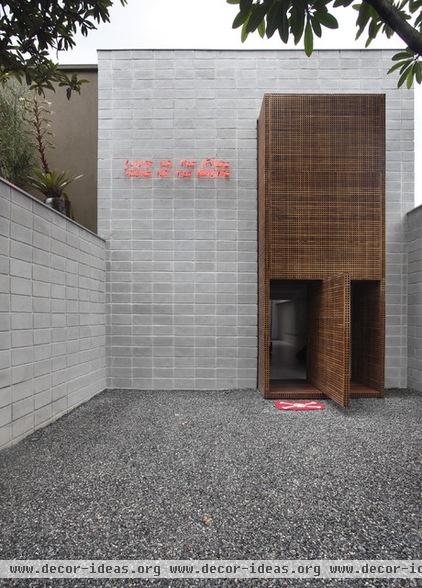
Two simple materials define this entry — materials that contrast yet complement one another. The pivoting door, made from the same material as the surrounding wall, lies almost hidden when closed.
More about this minimalist modern box in São Paulo
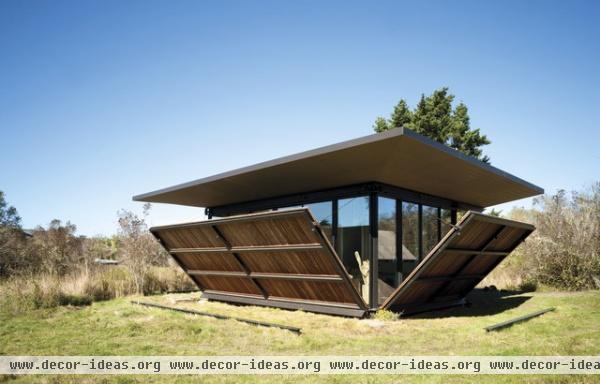
Imagination in Function
The architect's imagination created this small home to quickly react to its exterior environment. Walls that protect the glass can be raised or lowered depending upon the home's solar need or desired views. The home's flexible nature and small footprint allow it to function in varied climates.
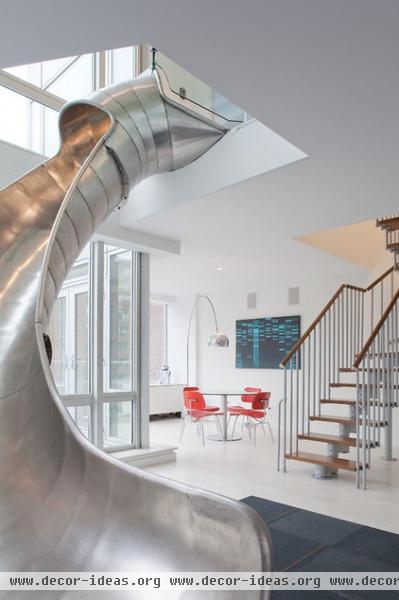
Yes, this is a slide. Why did I include a picture of a slide? Because I simply cannot imagine a better and more imaginative way to get from my office to the kitchen.
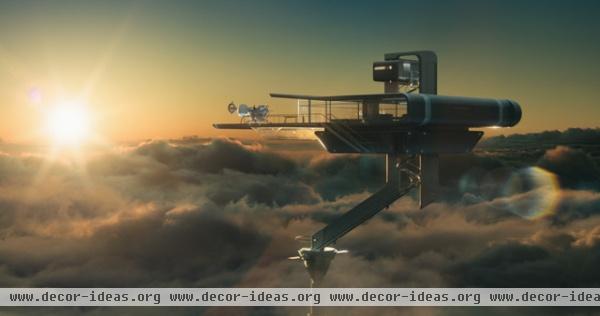
Imagination of the Future
You'll recognize this if you've seen Oblivion, a recent Tom Cruise film. Although I found the movie disappointing (sorry, you may disagree with me below), I found the architecture fascinating, beautiful and strangely functional for its future purpose. In other words, the architecture seemed believable. Raised high above the ground (because bad things live on the earth), this home in the movie lyrically floats among the clouds.
More about the architecture in Oblivion
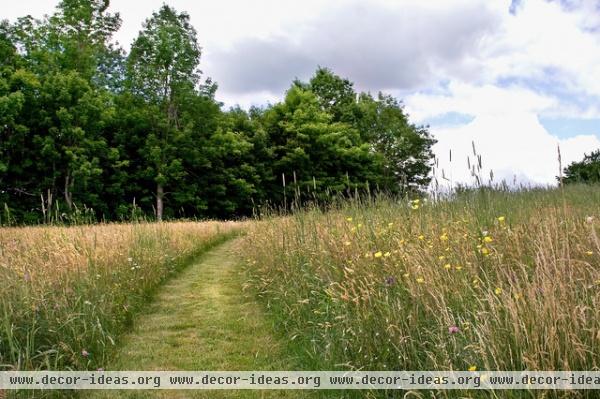
This image is not of architecture, but it provokes the imagination all the same. The path turns, creating a sense of wonder and adventure, both products of our imagination. We wonder what is just around that corner, what is just over the next hill.
In her book Fight to Keep Creativity Alive, L.A. Chandlar writes, "Maybe [imagination] is a perspective of heart, of openness. Watching and waiting for those stolen moments. But, I think, it's also about risk and not dithering around so much that you never make any choices, nor experience anything new at all. Being aware — actually creating the space to hear the bittersweet symphony of life. To find the small bits of Wonderland left to us."
Imagination creates wonder, as wonder does imagination.












